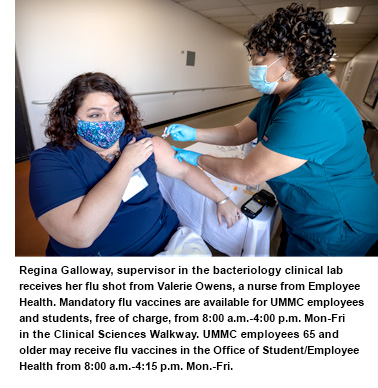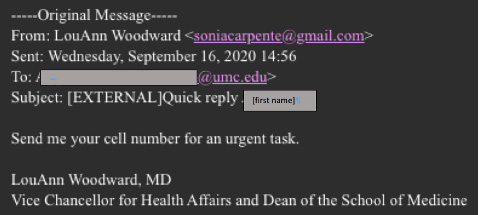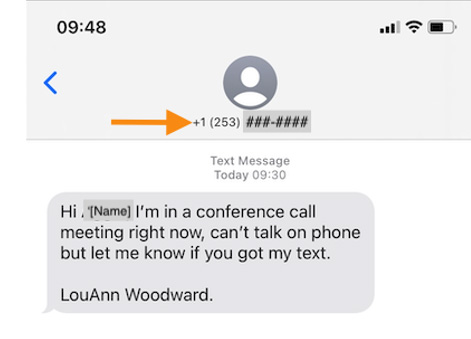COVID-19 Vigilance and Other Topics
Good morning!
We continue to monitor the daily COVID-19 statistics. Cases and hospitalizations have been increasing in most states, including Mississippi. We have not had a marked surge in our inpatient census, thank goodness. This lull has given us a bit of a respite to regroup, but between COVID-19 and the flu, we are wary of a “train wreck” situation as colder weather drives people inside where viruses can more readily spread. (By the way, our supply of flu vaccine has been replenished; make sure and get your flu shot.)
 On Wednesday we reached the sad milestone of 200 deaths of patients at UMMC from COVID-19. That’s nearly one death per day since the first case occurred in Mississippi in mid-March – which is both astounding and tragic.
On Wednesday we reached the sad milestone of 200 deaths of patients at UMMC from COVID-19. That’s nearly one death per day since the first case occurred in Mississippi in mid-March – which is both astounding and tragic.
One would hope that the publicity about the rise in cases and the Governor’s reinstatement of a mask mandate in nine Mississippi counties would cause people to realize that the pandemic is not over and to voluntarily comply with the tried-and-true mitigation measures of wearing masks, social distancing and frequent hand-washing. That constant refrain reminded me of this comment from a March 17, 2000 New York Times commentary by historian John M. Barry, whose account of the 1918 flu pandemic is filled with parallels to our experience 102 years later:
“For interventions to work, people have to comply and they have to sustain that compliance; most of that depends on voluntary efforts and individual behavior…an enormous challenge for civilian communities in peacetime….Again, if the public is going to comply over time, they will have to be led, inspired or compelled.”
— — —
Cybersecurity Awareness Month, which we recognize in October, takes on additional significance for me this year, since my name was used in a recent “phishing” attempt by a cybercriminal to gain access to UMMC networks.
It went something like this: In mid-September, 24 UMMC employees received an email from me. Except it wasn’t from me; it was from a hacker with evil intent. Our quarantine system blocked the email, but several recipients, believing it was from me, released it to their in-boxes.
The subject of the email was “Quick Reply” and included the name of the recipient. The text of the email was “Send me your cell number for an urgent task.”
Most employees who received the email saw it for what it was: a scam. But one employee – probably someone very conscientious and dutiful – responded with a cell phone number. That employee then received a text, also purportedly from me. The text read, “Hi (name of employee): I’m in a conference call right now, can’t talk on phone but let me know you got my number. LouAnn Woodward”
At that point, the employee became suspicious and immediately reported the incident to our information security team, which took the appropriate protective actions.
This incident is a good lesson in what to look for in suspicious digital communications. First, although the original email used my name in the “From:” line, the email address that appeared in parentheses after my name was clearly not mine. That should have been a tipoff. Also, the email was flagged “EXTERNAL,” even though it was supposedly between two UMMC accounts.

In the text purportedly from me, the area code of the sender was for the state of Washington. Again, not likely something I would have.
Even if those red flags were missed – and in our busy world, it’s understandable that they were – I think we’re all learning to adopt a healthy skepticism when it comes to digital communications, asking ourselves, “What’s wrong with this picture?” or “Is this real or is it fraudulent?”
 Almost every day, we read about “ransomware” attacks that have resulted from phishing attempts - like the one I’ve described - in which cybercriminals have gained access to business networks, compromised sensitive information and then forced businesses to pay a ransom to secure their data.
Almost every day, we read about “ransomware” attacks that have resulted from phishing attempts - like the one I’ve described - in which cybercriminals have gained access to business networks, compromised sensitive information and then forced businesses to pay a ransom to secure their data.
To help our personnel be able to recognize and thwart these attacks, UMMC requires all of us to take an Information Security Education course, available in HealthStream for our employees and in Canvas for our students. The course must be completed by Dec. 31.
Cyberattacks are on the rise. We have to arm ourselves with knowledge. Please stand strong with your UMMC colleagues and complete the course as soon as possible. Thank you.
— — —
I enjoyed reading the recent eCV article about the publication of the 14th edition of the Guyton and Hall Textbook of Medical Physiology. Originally written by UMMC luminary Dr. Arthur Guyton, it is one of two iconic textbooks in health sciences education (the other being Gray’s Anatomy). Although it doesn’t have a TV show named for it yet, Dr. Guyton’s textbook was in use when I was in medical school and my class was one of the last to actually be taught physiology by Dr. Guyton himself. Beginning with the ninth edition and continuing to this day, one of Dr. Guyton’s protégés, Dr. John Hall, has served as co-author of each successive edition. Dr. Hall, of course, is chairman of our Department of Physiology and Biophysics, and a renowned scholar in his own right. The really neat part of the story is that with this edition, Dr. Hall has shared editorial duties with his son, Dr. Michael Hall, associate professor of medicine at UMMC, who is one of our rising stars in cardiology. This is a heartwarming story that reflects an enduring commitment to excellence and I commend both of our Drs. Hall on this achievement.
— — —
As we continue the countdown to Election Day Nov. 3, I hope everyone will be able to exercise their number one civic responsibility (and opportunity!) to express their preferences through their vote. Although early voting has been heavy, those going to the polls on election day may have concerns about their personal safety in the context of the pandemic. In this recent video produced by the Association of American Medical Colleges, two AAMC leaders, including the association’s chief scientific officer, discuss what simple precautions can be taken to protect yourself while voting. The takeaway for me is that voting presents minimal risk of infection as long as masks, social distancing and hand hygiene are maintained.
Until next week, be safe, show grace in these trying times, and stay #UMMCStrong.



